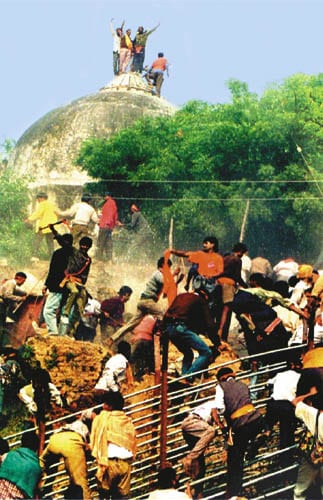
An Old Lotus in A New Pond
Brand BJP is now riven by election defeat and internal strife. How can the party reposition itself?
When successful brands start performing poorly, they start acting in certain predictable ways. On the one hand, there is this magnified sense of the world having changed and an instinctive desire to change everything, and on the other, a nostalgic return to the days when the brand was riding high. From current accounts, it would appear that the latter is the case with the Bharatiya Janata Party (BJP). What is vital is for the brand to understand its own success with uncluttered eyes and avoid the temptation to get trapped in yesterday’s language.
The BJP succeeded when it followed the script of mainstream right-wing politics — create the need for a strong, ideologically pure alternative to the party in power by creating anxiety among the majority. To succeed, the advantaged majority must begin to feel like the disadvantaged minority and feel diminished and orphaned. It then looks for a strong father figure, one that is re-assuring in the sense of clarity (moral clarity in the words of George Bush and Dick Cheney) and certainty.
The BJP could deliver on this strategy because of three reasons. First, it struck a chord with a significant section of voters by tapping into their anxiety about a perceived timidity of the Hindu, forever condemned to be bullied and taken for granted.
The symbol of Babri Masjid represented a powerful metaphor for the “impotence of the majority in their own country.” Which is why the idea of “mandir wahi banayenge” (we’ll make the temple only there) is perhaps the most powerful advertising line to have emerged in the last couple of decades. With the destruction of the Babri Masjid, the BJP has not merely razed a building but converted what was a timeless myth into a historical detail.
Second, the BJP could harness the resentment of the majority with the polity because it was seen as a disciplined, well organised party that stood firm on its principles. The backing of the Rashtriya Swayamsevak Sangh (RSS) gave it a Spartan aura of righteousness and for the urban middle class, the tag of “the party with a difference” seemed to be a credible one.
And finally, in order to thrive in the era of coalition politics, the BJP had Atal Behari Vajpayee, the statesmanlike figure who could synthesise diverse strands of opinion, and make compromises without appearing compromised.
Twist the Tale
In some ways, for brand BJP to revitalise itself, it needs all the three structural variables to work in harmony — the creation of a need based on a deep, culturally shared anxiety, the appearance of clarity and moral strength and the ability to carry different allies without getting compromised. Unlike the centrist Congress which is rooted in an ethos of commodious maternalism, and is comfortable accommodating the interests of diverse constituencies, the BJP needs to operate from a core constituency outwards using a strong psychological pivot.
What could this pivot be? And what could the myth be? Narendra Modi has shown the way in Gujarat, and the BJP has much to gain from Modi’s strategy, perhaps more than from Modi himself. After establishing his credentials as a strongman in a decidedly unsavoury way, Modi switched gears and built a new plank using the classic right-wing strategy — unify Gujarat by appealing to its wounded sense of pride, the now famous Gujarati asmita (pride), position the Centre as the enemy of the state, ruthlessly focus on visible development, maintain an air of unimpeachable personal integrity, do conspicuous battle with traditional politicking particularly within one’s own party, promote one’s achievements vigorously and speak off a tight single-minded script. In Modi’s scheme of things, Hindutva in its overt form plays a minor role.
The opportunity for replicating the principles of the Gujarat strategy at a national level exists, though with a few modifications. The middle class is deeply disenchanted with the political process and hence the ground is fertile for a party that speaks for development and radical administrative overhaul. The rapid changes we are seeing do create an ambivalent anxiety about modernity; we want the benefits but are leery of the costs.
One potential narrative for BJP can run thus — Indian politics needs a cleansing, a purifying yagna that reconnects India to its fundamental values while propelling it forward, on its own terms. Politics — which in India is too much about patronage, appeasement and divisions in society — needs strong righteous guidance from a party in touch with its Indian roots. The idea of making India great again, the Indian way can potentially resonate with a large section of India.
To pull this storyline off, instead of retreating into what it might be tempted to believe is its core in the name of greater ideological purity, the BJP needs to go back to being perceived as the party with a difference. It needs to visibly sacrifice short-term political advantage for the sake of higher principles and fight for the integrity of key democratic institutions. It needs to engage in cultural politics, for that is part of its script, but needs to be highly selective and needs to create distance between itself and its lunatic fringe.
Brand BJP is far from being irrelevant, but the road to relevance is a long and hard one. As things appear, the party may not have the stomach for it. But then five years is a long time.
(The author is MD & CEO of Future Brands)
(This story appears in the 30 November, -0001 issue of Forbes India. To visit our Archives, click here.)





